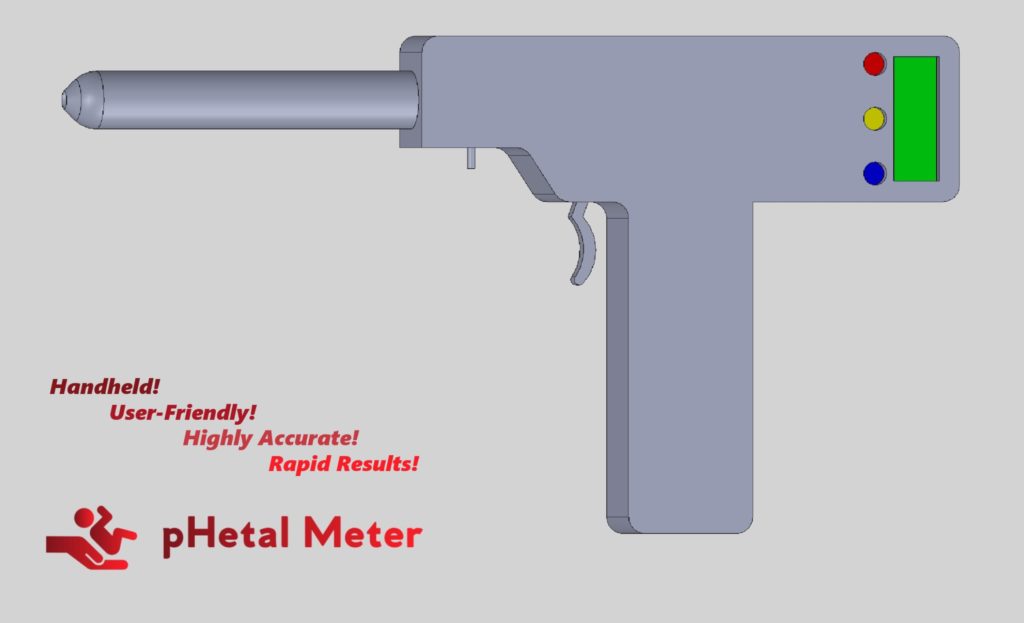What Is It?
How Does It Work?
FHRs are often difficult to read and are difficult to interpret the fetus’ distress state. Physicians often turn to emergency intervention by performing a Cesarean Section (CS). Research has shown that measuring fetal pH blood is a more accurate way to determine the health of the fetus compared to current methods.
Our device is a portable, hand-held device that quickly determines the pH of of the fetus’ blood. The pHetal Meter is user friendly, causes no additional discomfort to the mother, and provides readings within 5 minutes. The device has deployable, internal components encased in a 3D printed shell.
What is it?
FHRs are often difficult to read and are difficult to interpret the fetus’ distress state. Physicians often turn to emergency intervention by performing a Cesarean Section (CS). Research has shown that measuring fetal pH blood is a more accurate way to determine the health of the fetus compared to current methods.
Here are our design criteria in order to ensure that we are creating the safest, most efficient, and cheapest device.
| Requirements | Design Criteria | Acceptance Criteria |
Portable | 10.75in x 6in x 1in | ± 0.1 in |
Fast Acquisiton Time | Measurements within 5 minutes of acquisition | 5 minutes ± 10 seconds |
High Accuracy | pH levels show higher accuracy than current methods | Accuracy must be ± 0.01 |
Minimally- Invasive | No additional discomfort to the mother | Easy insertion into vaginal canal |
User Centered | Nurse operable | Physician should not need to be present |
Blood Sample Size | 50 µL | ± 20 µL |
How does it work?
Our device is a portable, hand-held device that quickly determines the pH of of the fetus’ blood. The pHetal Meter is user friendly, causes no additional discomfort to the mother, and provides readings within 5 minutes. The device has deployable, internal components encased in a 3D printed shell.
As previously outlined by our design criteria, we have developed the following model:

The main housing of the device will contain the pH meter and pH probe, which are the largest component of the pHetal meter.
The tube will contain in internal components. This includes a lancet to prick the scalp of the fetus, a capillary tube to collect the blood sample, and a small cotton swab to apply pressure to the small incision made. We will also be attaching a suction cup (not modeled) at the end of the tube to ensure the blood reaches the capillary tube and pH probe. Finally, our trigger will allow each individual component to be deployed individually and safely.
Our device must reach basic health and safety requirements. Therefore, we designed the tube of the device to be detachable and disposable for every use.